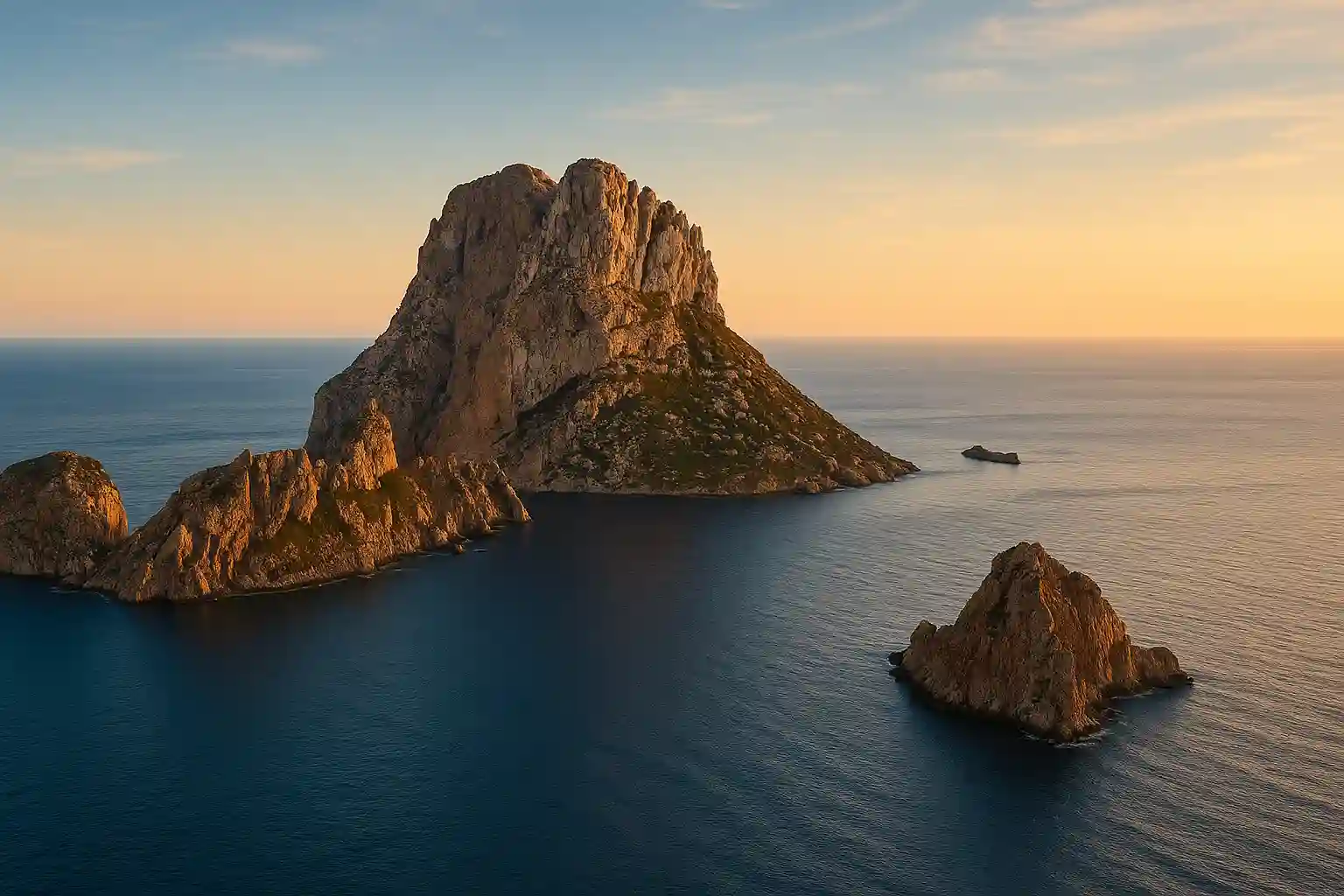San Antonio to Es Vedrà & Formentera – A Day of Sea, Myth, and Easy Abundance

We cast off just after the town yawns awake. On deck: a basket of oranges, coolers sweating with ice, and that low hum boats make when they’re eager to move. The captain points at the map with two fingers: west for a glimpse of the island’s stone myth, then a clean line south. The water answers by flattening into a lane.
Toward the Rock of Stories
Es Vedrà doesn’t appear all at once. First it’s a smudge, then a shoulder, then a presence that silences small talk. Some say compasses stutter here, that the rock holds a charge, that homing birds circle like ideas that won’t land. I only know that as we draw closer, the deck gets quieter. Even laughter softens, like it’s listening.
The crew slows the boat; the bow aims at the cliff’s broken geometry. In Spanish, someone whispers “imán” — magnet. The word fits. We drift, and the island behind us pulls the sea around the rock as if fabric were being gathered. A tray appears — olives, almonds, slices of bread that crack. The first glass clinks, and the day lengthens.
The Language of Water
Travel by sea changes how people speak. Phrases stretch; questions become gestures. I note a few easy words as they float by: proa (bow), popa (stern), amarras (mooring lines), chapuzón (quick dip). The crew toggles between Spanish and English with island ease; a Catalan aside sneaks in like a sea breeze. Language on the water moves like current — mixing, separating, returning.
Crossing to Formentera
After the rock has taken its tribute of attention, we turn south, the boat laying down a white thread across the blue. Formentera rises so low and pale it feels imagined until the sand throws light back at you — a long bar of color, mint to milk. Someone points at Espalmador, uninhabited and unhurried, a suggestion of another stop if the day allows.
We anchor where the water is all clarity and shallow sighs. The first swimmers go overboard with a shout; others move slower, lowering themselves down the ladder like negotiations with joy. Masks appear, then paddles. On deck, a cutting board becomes a kitchen: tomatoes that taste like sun, soft cheese, tuna with a squeeze of lemon.
Lunch, Island-Style
The plate in my hand has everything the Balearics do well: salt, oil, acidity, crunch. Someone passes a bowl and says “¡que aproveche!” — the kind of phrase that makes you part of a table even if it’s a moving one. The captain talks about currents and changing sandbars; the deckhand explains how to read the water’s stripes for depth and wind. We learn while we eat, which is always the best way.
If you’re tuning your Spanish for work or travel, days like this turn vocabulary into muscle memory. Later, with a notebook and ten minutes of quiet, you can sketch the phrases that stuck and the ones you still want. If you need structure, pair the trip with tailored sessions: Business Spanish lessons help you shift from friendly deck talk to confident meetings the following week.
Shore Time on Formentera
When we step onto the sand, it squeaks — the small, happy sound of fine grains. The water is a spell of transparency broken only by anklets and fish. I walk until the boat shrinks, then lie back and let the world tilt toward the sky. Here the horizon is a ruler; the brain measures distance by color.
A café behind the dunes hums with midday voices. I order a short espresso and listen to the mix — Spanish rhythms, Italian melody, English punctuation. The island is multilingual because the sea brings conversations like driftwood. You pick the pieces you need, and the rest becomes atmosphere.
Home on a Path of Light
Afternoon turns the water the color of glass bottles. We haul the anchor; the chain drips sun. Es Vedrà watches our return with the patience of stone. San Antonio opens like a fan — harbor, promenade, the first clink of evening. We tie up, slightly saltier and slower, pockets full of small words and sand.
